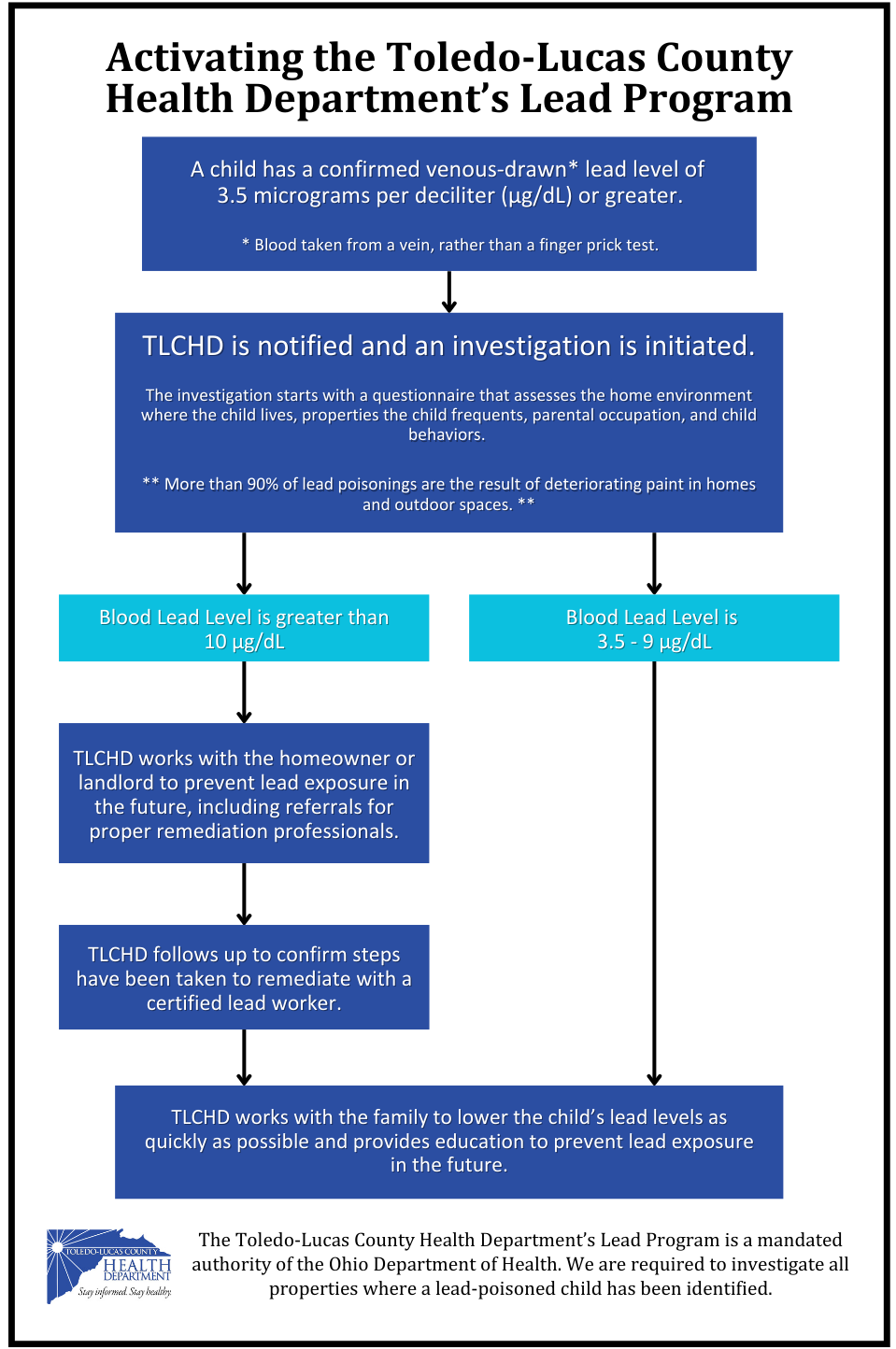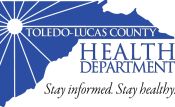Call (419) 213-2013 to schedule an appointment for lead screening.
Lead Poisoning
No safe blood lead level in children has been identified. A child with a blood lead level of 3.5 to less than 10 micrograms per deciliter is defined as having an elevated blood lead level. “Lead Poisoning” is defined as a confirmed level of lead in human blood of 10 micrograms per deciliter (10 µg/dl) or greater.
Lead exposure can affect nearly every system in the body. Because lead exposure often occurs with no obvious symptoms, it frequently goes unrecognized. Learn more about hiring a licensed lead inspector here.
If a child is identified to have an elevated blood lead level, the Toledo-Lucas County Health Department’s Lead Program is activated:

Click here to view this chart in Spanish
Do’s and Don’ts for Living Lead-Free
If you are considering purchasing an older home, you should first check to see if it has any known lead hazards. If a homeowner has not complied with a health department order to control lead hazards, the property must remain vacant until the order is lifted. This can only happen if:
- the lead work is performed by a licensed lead abatement contractor and
- the property passes a clearance inspection by a lead inspector or lead risk assessor.
To check the status of a property in Lucas County, follow this link and click “List of Hazardous Properties”.
State Law Mandates
State law mandates blood lead screening for all “high-risk” children 72 months (6 years) of age and below.
A “high-risk” child is defined as a child that:
- Lives in, or visits, a house or facility built before 1978 with recent, ongoing, or planned renovation/remodeling. (This includes a daycare center, preschool, or home of a babysitter or relative.)
- Lives in or visits a house that has peeling, chipping, dusting, or chalking paint.
- Has a sibling or playmate who has or did have lead poisoning.
- Frequently comes in contact with an adult who has a hobby or works with lead. Examples are construction, welding, pottery, painting, and casting ammunition.
Or any child residing in one of the following Toledo/Lucas County zip codes:

Note: Every child on Medicaid is also mandated by the State to be tested for lead.
For an easy-to-follow handout to share with your pediatrician click here.






